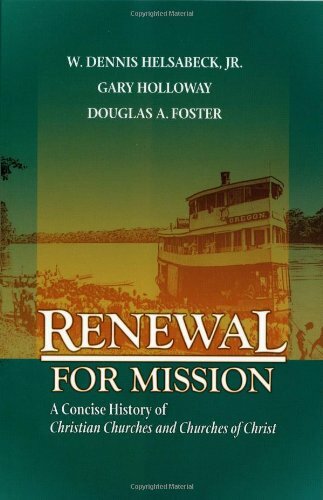I grew up in church, and I don’t remember any point in my life where my family wasn’t actively involved in a local congregation.
The church I grew up in was a Christian Church. You probably read that last sentence and thought, “well duh!” Aren’t churches Christian by nature? What I mean is that, where some people grew up Baptist, Presbyterian, or Assemblies of God, my quasi-denominal tradition is known as the Christian Church.
The Christian Church doesn’t like to call itself a denomination. Even though Christian Churches are autonomous and don’t answer to a hierarchy above the local congregation, many of the churches share missionary organizations, colleges, and camp and conference experiences for kids and teens.
My Christian Church heritage is important to me, because it’s where I began to grow in my faith. Even though the church where I work and call home isn’t part of the Christian Church, we did begin closely tied to them and still send kids to some of their camps and conferences.
Until recently, I didn’t know a whole lot about the history of the Christian Church beyond the basics. I knew that the Christian Church grew out of something called the Stone-Campbell Movement in the early 19th century, and I was aware that a few other quasi-denominations sprung from splits in the movement, giving us the Disciples of Christ, Churches of Christ, and the United Churches of Christ, among others.
I finished reading Renewal for Mission: A Concise History of Christian Churches and Churches of Christ not long ago, and I gained insight into this particular slice of American church history. Just a couple of decades after the foundation of this nation and not long after the Great Awakening, two movements popped up seeking a return to the church of the New Testament – a “restoration” as some in the Christian Church like to call it – and unity among believers. Barton Stone and father-and-son Thomas Campbell and Alexander Campbell sought a unified church that transcended denomination and even threw off denominational labels. Their followers combined forces to create one movement.
The Stone-Campbell Movement had certain doctrinal non-negotiables: eschewing denominations, congregational independence, taking the Lord’s Supper every Sunday, and believer’s baptism as an essential component of salvation. Sadly, the commitment to unity that the Stone-Campbell Movement sought didn’t last. Splits over slavery, support of certain missionaries, the use of instruments in worship, and theological liberalism helped to fracture the Stone-Campbell Movement into various groups that don’t consider themselves denominations but operate in like-minded fashion.
The churches that stemmed from the Stone-Campbell Movement operate in their own unique ways today. Many Churches of Christ still don’t allow instruments in their worship services, and the United Church of Christ had doubled down on both theological and political liberalism. The Stone-Campbell Movement has even given us at least three presidents whose faith grew out of these movements: James Garfield grew up in a Church of Christ, Ronald Reagan came to faith in a Disciples of Christ church, and Barack Obama attended a United Church of Christ in Chicago.
My church can trace its heritage to the Stone-Campbell Movement, as our founding families came from a Christian Church, and several of our pastors have education at Christian Church colleges. We hold to many of the same non-negotiable beliefs as Stone-Campbell Movement churches: local congregational leadership, a commitment to unity, and taking the Lord’s Supper every Sunday.
One Christian Church belief we don’t adhere to is the belief that baptism is essential to salvation. We believe that baptism by immersion is an act of obedience once one comes to faith in Jesus, and we require immersion for membership, but we don’t believe that baptism saves a person.
I appreciate my Christian Church heritage, and I’m definitely grateful for how it has shaped who I am today, even if I haven’t officially been part of a Stone-Campbell Movement church since I was a teenager. Reading Renewal for Mission has also sparked a desire to study church history in general a little more. Hopefully, I’ll have more about that to share as I read and learn more.
I highly recommend studying the history of your denomination or church tradition, because you never know what you’re likely to come away learning or appreciating.



Comments
Leave a Reply